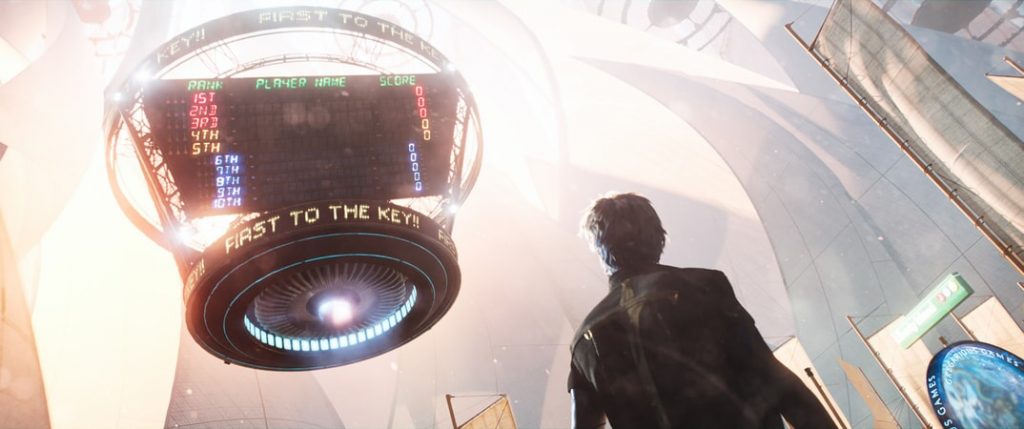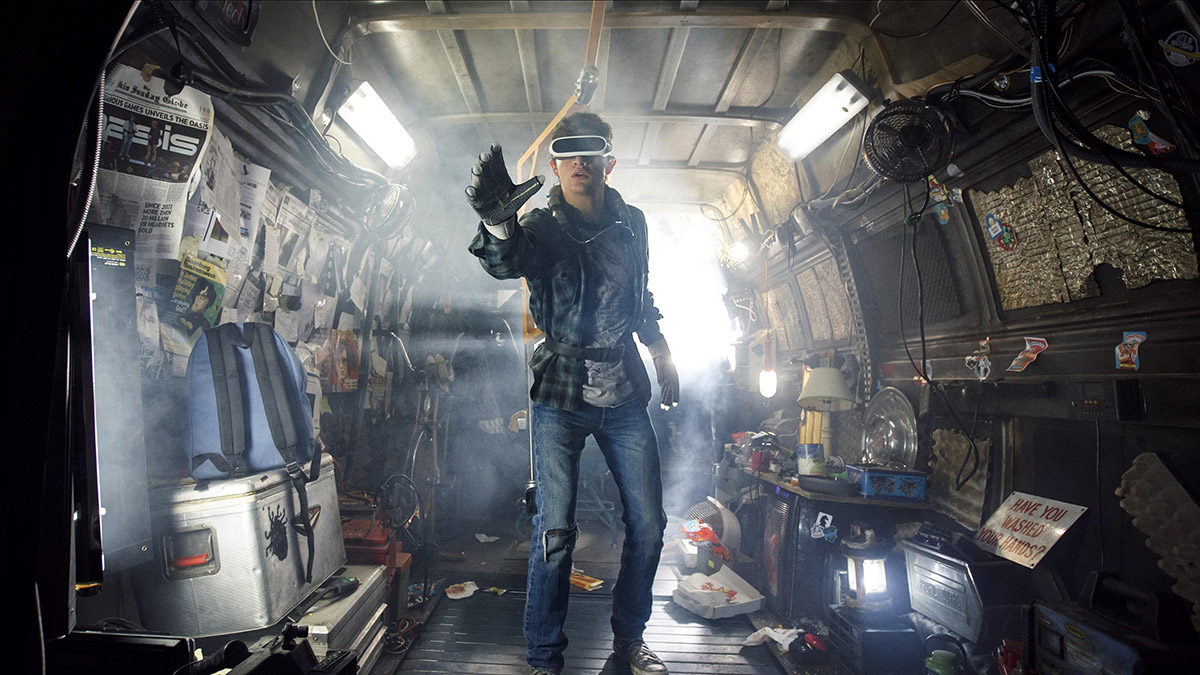Core Data:
- Vision: The OASIS (Ready Player One)
- Type: Popular Culture – Book/Film
- As Seen In: Ready Player One (book and film)
- Envisioned: August 2011 (film in 2018)
- Visionary: Ernest Cline (and later Steven Spielberg)
- Target Date: 2045
Overview:
Ready Player One’s ‘OASIS’ has been hailed by many as a definitive example of the possibilities of a metaverse. The science fiction novel, published in 2011 as the debut of American author Ernest Cline science fiction novel, was later adapted into a film, directed by Steven Spielberg which was released in 2018.
Both are set in a dystopian future which follows protagonist Wade Watts as he explores a vast virtual reality world with his friends in a quest to discover hidden Easter Eggs and inherit the fortune of the game world’s creator James Halliday and with it control of his uber company, game development studio Gregarious Simulation Systems (GSS).
In this vision, the virtual reality world of the OASIS has become the ultimate escape from everyday life and citizens of all kinds spend large swathes of their time playing, interacting and indeed working within it. The world is rendered in a CGI version of photo-reality and each user is represented by a persistent Avatar that they can customise and equip with all manner of weapons, tools, special items and vehicles which can be earned in game or paid for with real-world currency. There is incredible freedom to explore many distinct worlds within the OASIS and enjoy every conceivable experience from the more mundane such as attending school, virtual shopping, visiting museums or chatting in a bar to taking part in races, challenges or epic battles and quests.
Many of the tropes within Ready Player One are redolent of the existing structure of the games experience such as having in-game avatars you can modify, earning items and weapons through grinding or real-world purchases

Key Tenets:
- Hardware: The OASIS is a virtual world accessed by Virtual Reality rigs consisting at the bare minimum via headsets and gloves
- However there are multiple levels of more sophisticated hardware solutions that offer an enhanced or more immersive experience, including harnesses that allow you to move in the virtual world whilst staying in one place, suits that emulate tactile sensations (including ability to feel pain to a limited degree) or entire immersion pods that fully encase the player
- Economics: The game world has its own currency that can be earned in game or purchased with real world currency that allows the purchase of additional items, equipment and experiences
- In this vision humans can also earn real world money or serve off time for criminal behaviour by performing tasks within the OASIS
- Experience: Users have their own persistent avatar and handle within the world that is likely to be quite different from their real world appearance
- This avatar can be modified at will with distinct clothes, physical features at will (although upgrades need to be earned or paid)
- Avatars can also be equipped with weapons, vehicles, tools and other special items that grant powers, which can be earned or paid for
- Avatars have full freedom of movement in the OASIS, including the ability to go into buildings, use vehicles, and their actions effect the game world
- There are multiple worlds to visit within the OASIS, each with different style
- When players are destroyed in game some (or all) of their items become available to be collected by others
- The OASIS suggests there are limitless different types of quest, but those illustrated involve familiar game tropes such as battle royale fighting, RPG battles, racing, etc.
- A vast museum includes the ability to rewatch key moments in individuals lives
- IP: The OASIS is IP agnostic, meshing up different iconic characters, vehicles and action sequences from films and other popular culture without limit (something that doubtless proved a rights nightmare for the film)
- Company: In the Ready Player One World, the game developers Gregarious Simulation Systems have become a dominant corporation, challenged only by IOI (Innovative Online Industries) a more hostile profit-oriented corporation who’s vision is more focused on monetising the experience, in part through advertising.
State of Play (May 2021)
- Hardware: VR headset technology has developed rapidly in recent years. Comparatively sophisticated and immersive experiences (with headset and controllers) are genuinely affordable (the Oculus Quest and Playstation VR for example) and various reports suggest there will be around 57 million players in 2021. Crucially the most popular of these systems (Quest) are now fully untethered, although more powered ‘tethered’ systems do still exist
- There are also multiple attempts at offering more immersive experiences through additional hardware, including haptic suits, travelator walking pads, heat/cold sensors
- Concept: Multiple ‘Metaverses’ have emerged (from Second Life to Minecraft and Roblox) that allow users to explore an extensive world, but these are still comparatively siloed compared to the OASIS vision.
- Economics: Concepts such as in-game credits and earning these through action in game (often referred to as grinding) or through paying real world currency are already established
- Persistent in-game items that can travel across multiple realms and have their own value (in real-world currency and in-game currency) have been available in different guises for a while within existing games (e.g. selling gold or items in World of Warcraft, trading players in FIFA Ultimate Team), but the concept is being advanced through blockchain / Non Fungible Token (NFT) technologies
- IP: Until recently the idea of one brand ‘guesting’ in another game was relatively limited, but experiences such as Epic’s Fortnite and to a degree Roblox are changing that. With avatars from multiple pop-culture brands and in-game product placement become increasingly common.
Reality Check: On Target
Considering that the vision was part inspired by popular culture and the games world, it’s hardly surprising that so much of it falls in line with existing developments.
Persistent items and avatars, familiar looking game economies, and IP mash-ups are all with us already, so the main leap of faith is really the immersion quality of the VR experience. With the evolution already being made and the companies involved, it’s hard to believe that we won’t have something similar to the OASIS within 24 years. Of course the concept of a profit-obsessed company led by a power-hungry leader looking to monetise the world with ads is a little far-fetched…
Further Reference:
- Ready Player One book
- Ready Player One movie
- Virtual Reality
- Metaverse
Brian has been working in the games industry since the mid-1990s, when he joined the legendary studio DMA Design, as a writer on the original Grand Theft Auto. Since then he's worked with major publishers, founded his own digital agency, and the Scottish Games Network. At various times he's worked as a journalist, editor, narrative designer, lecturer, executive producer, and director.



































